Getting from point A where a prospect first learns about your brand to point B where they make a purchase and beyond involves many twists and turns.
To understand each individual customer journey, and better yet, optimize it, you’ll need advanced analytics that measure every customer interaction.
That’s where omnichannel analytics come in.
What Is Omnichannel Analytics?
At its core, it involves analyzing customer data across all business channels.
For example, rather than only analyzing website activity, omnichannel analytics looks at every customer channel and touchpoint, which can include:
- Your website
- Social media
- Your mobile app
- Your e-commerce store
- Conversational AI like chatbots
- Contact center
You can even use it to generate data from speech analytics to understand meaning and detect emotions.
And if you’re a brick-and-mortar, you can use omnichannel retail analytics to monitor in-store activity as well.
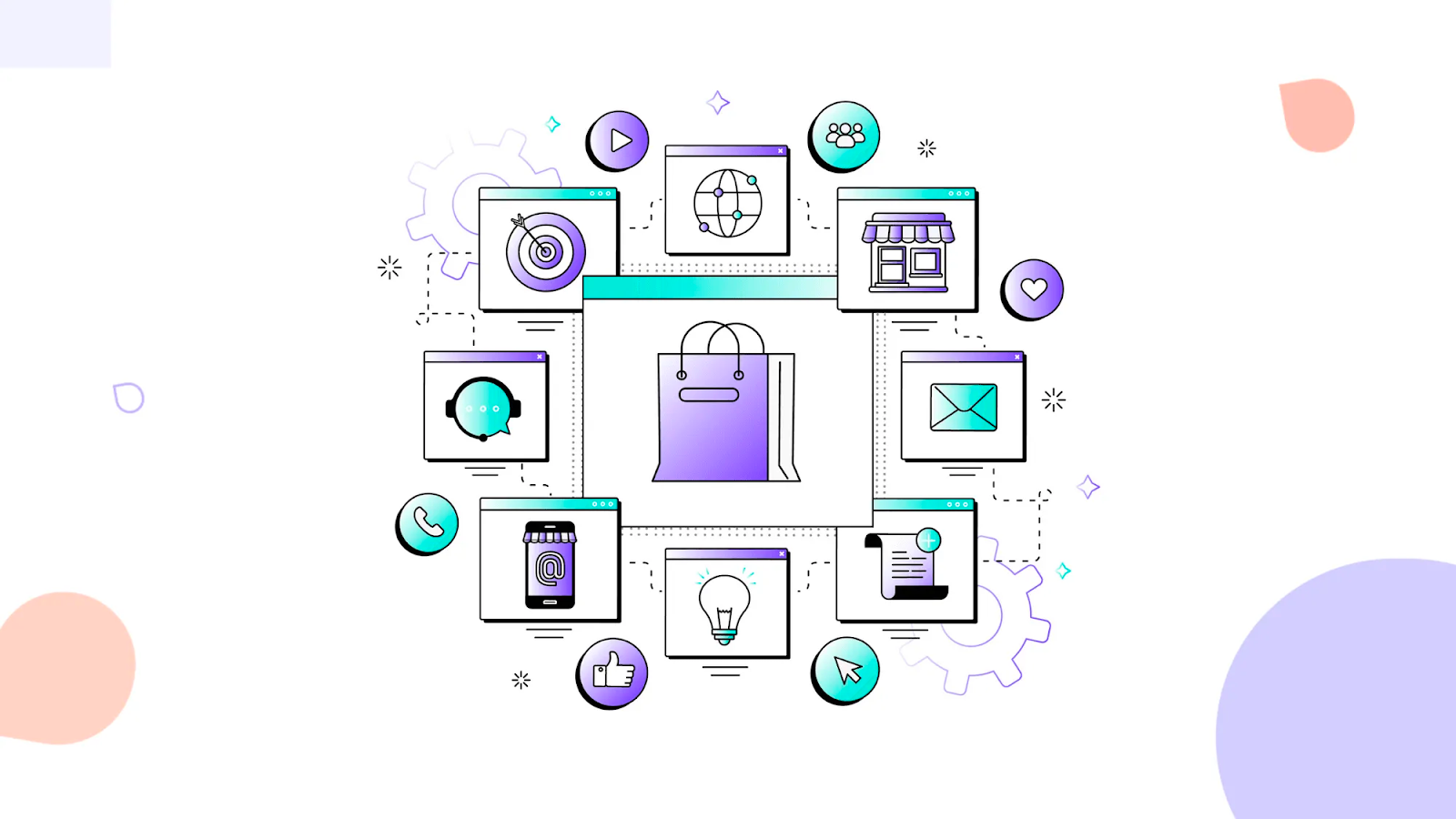 Source: Mayple
Source: Mayple
In other words, omnichannel analytics looks at every single interaction involved with sales, marketing, customer service, and everything in between for a comprehensive view of the entire customer journey.
Instead of viewing one business channel in a vacuum, this form of analytics zooms out and looks at the entire process and how one customer interaction leads to the next.
This makes it far more robust than single-channel, multi-channel, or even cross-channel analytics because you’re getting a 360-degree vantage point.
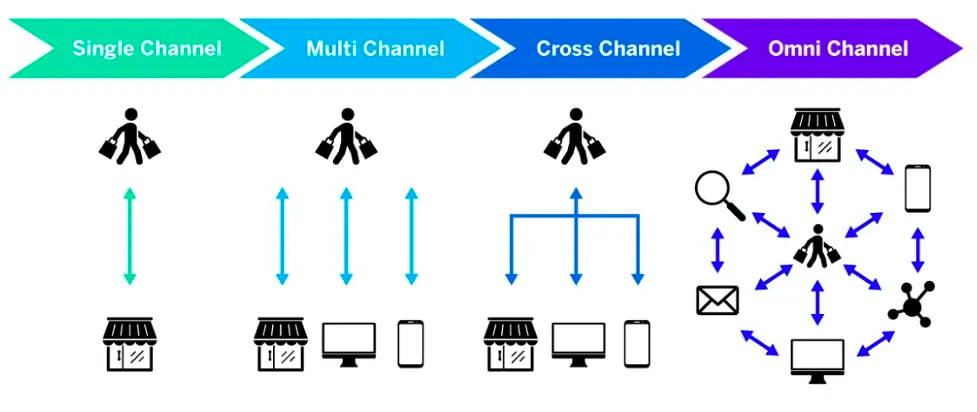 Source: Qualtrics
Source: Qualtrics
As a result, omnichannel analytics offers some distinct advantages over other varieties of analytics.
Omnichannel Analytics Benefits
With the comprehensive, big-picture nature of this type of customer analytics comes actionable insights that are hard to get elsewhere.
For example, it’s perfect for end-to-end customer journey mapping (more on this later), which lets you track every touchpoint from start to finish.
That way, you get an in-depth overview of how customers interact with your brand on every single channel. This helps you to connect the dots and ensure that valuable customer data doesn’t get put into siloes.
Omnichannel analytics also allows you to identify pain points in the customer journey, not just on your website but on all other relevant channels like social media, email, your mobile app, and so on.
That’s huge because any major friction can be disruptive to the customer experience. And if you don’t know what’s causing an issue, it’s impossible to diagnose it.
By having a 360-degree vantage point, however, you can accurately pinpoint problems and quickly address them.
An omnichannel strategy also facilitates better user customization because you have highly personalized customer data, enabling you to refine sales and marketing messaging, as well as general customer conversations.
Add that all up, and using an omnichannel analytics solution often translates into:
- A more effective sales and marketing strategy
- More customer engagement
- Higher conversions
- More customer satisfaction
- Deeper customer loyalty
Not to mention, you can save a lot of time and money by not putting your efforts into ineffective strategies in your marketing campaign and elsewhere.
The Customer Journey of the Modern Consumer
Every customer journey is a little different, and the exact number of touchpoints can vary depending on the industry, business model, marketing channels, and more.
That said, most experts say it takes an average of about eight touches before someone buys.
In some cases, these touchpoints are strictly online — think SaaS and eCommerce businesses. Other times, touchpoints can be both online and offline — think brick-and-mortar retailers.
A critical part of understanding the sequence of touchpoints (and subsequently optimizing them) is mapping the customer journey.
Here’s an illustration of the wide array of digital and physical touchpoints and how customers move through the various stages of the sales/marketing funnel.
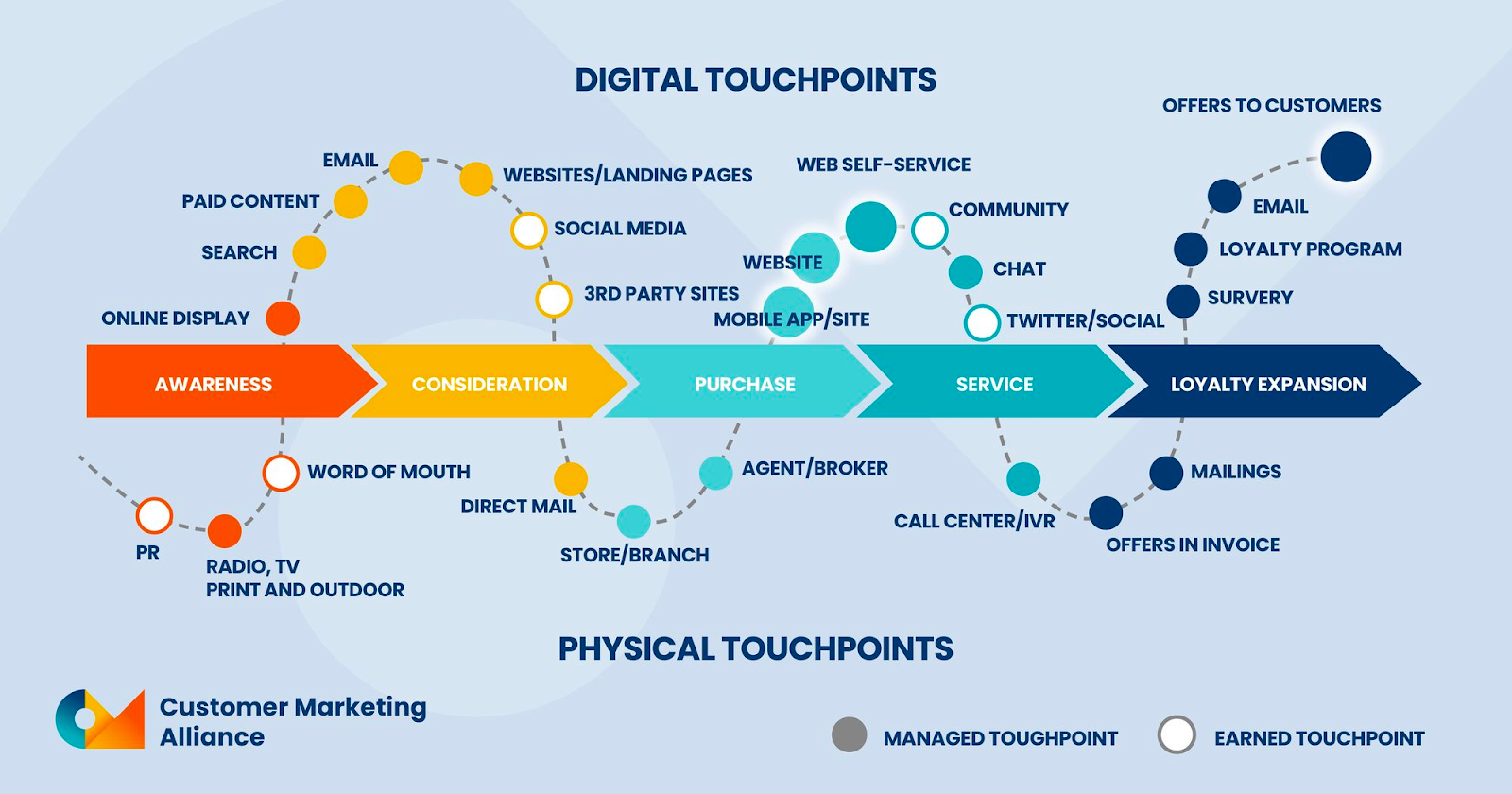 Source: Customer Marketing Alliance
Source: Customer Marketing Alliance
By understanding each stage of the customer journey, this should put you in a position to reap the benefits we just discussed like refining your sales and marketing, raising conversions, and increasing customer satisfaction.
But it all starts with omnichannel analytics.
Omnichannel Analytics Examples
To gain a better understanding, let’s look at some examples of how a SaaS or eCommerce company may use an omnichannel analytics tool.
If a SaaS company wanted to go macro and see the customer journey end-to-end, they could start with the moment someone becomes a first-time visitor to signing up for a free trial version of a product to ultimately upgrading to a paid version (and all the touchpoints in between).
With Woopra customer journey analytics, for instance, they could analyze each touchpoint and see how much dropoff there is along the way.

Or, let’s say a company wanted to go more granular and track key metrics in the customer journey.
They could use omnichannel marketing analytics to determine how many users converted from AdWords.
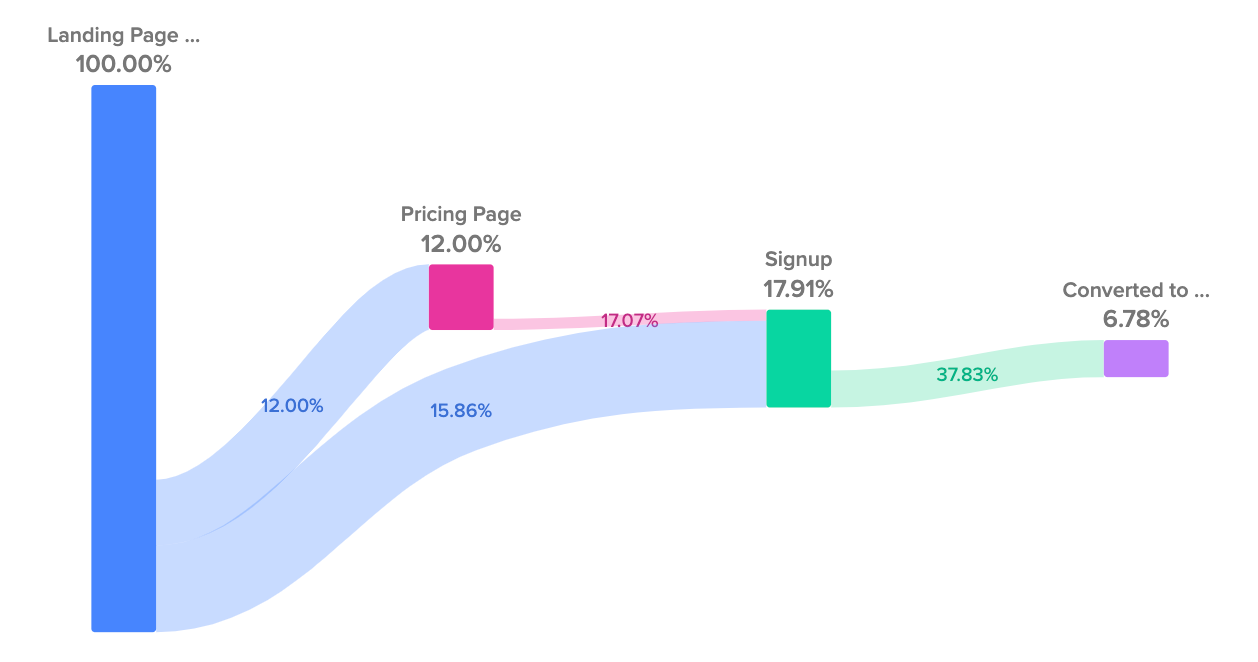
They could see how live chat impacts conversions.
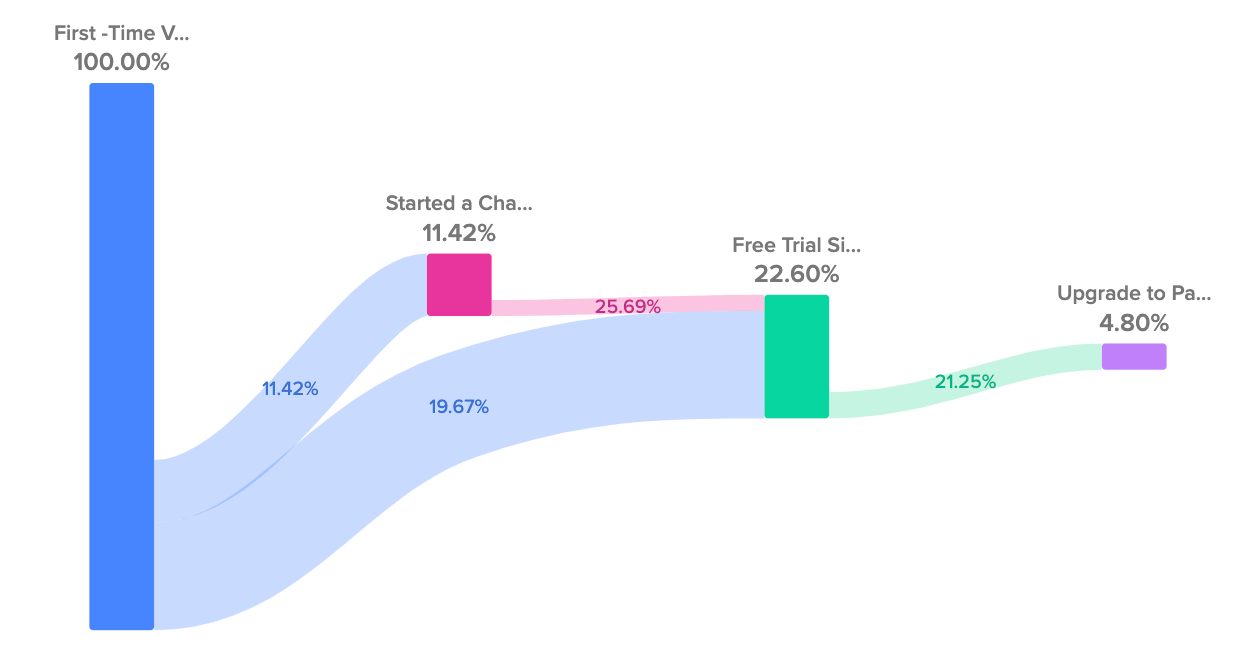
Or they could find out how onboarding emails affect conversions.
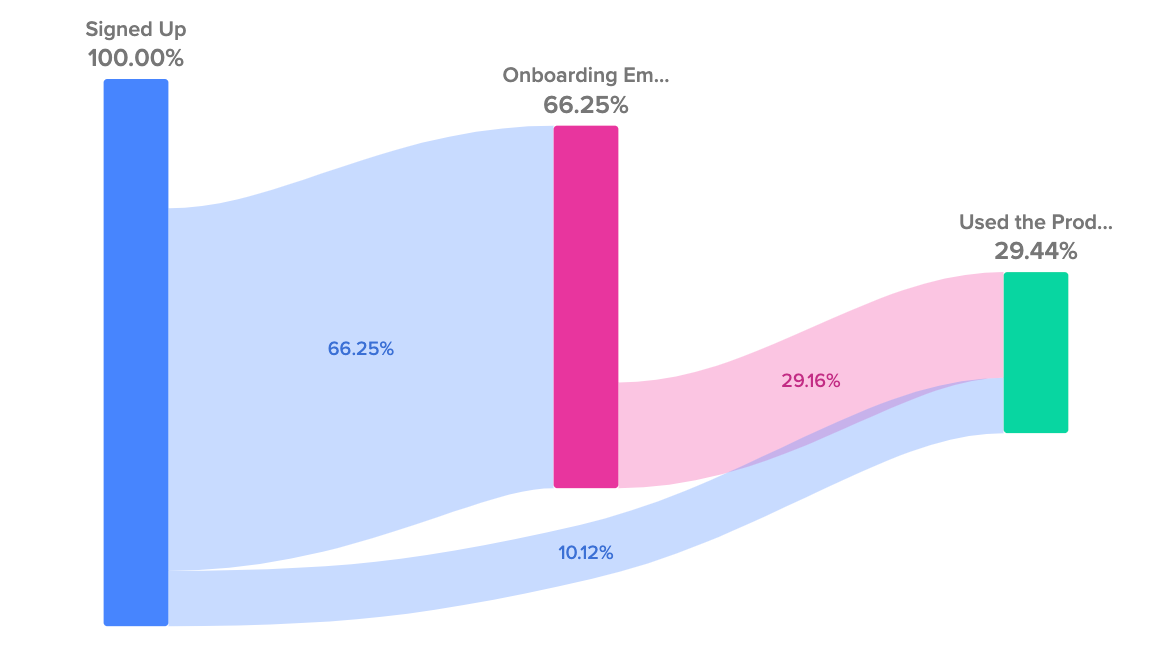
The possibilities are nearly endless with an omnichannel approach, and you can track a wide variety of metrics.
How to Implement Omnichannel Analytics
Pick Your Software Tool and Unify Customer Data
The first step is to select the right tool to generate omnichannel data.
Woopra, for example, is a customer analytics tool that integrates data from many different sources, including Google Ads, HubSpot, Mailchimp, Marketo, and Salesforce just to name a few.
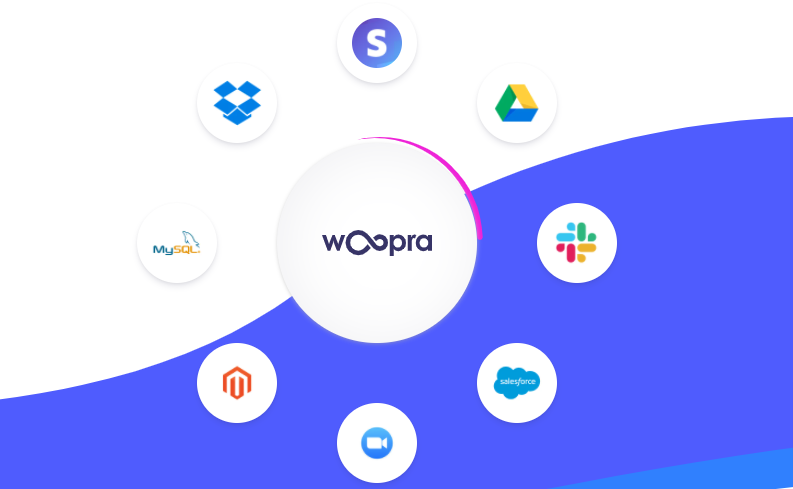
Ideally, the tool you use will be capable of grabbing customer data from multiple sources like this and unifying it so you can gain insight into the full spectrum of customer data from one convenient place.
This sets the stage for creating an omnichannel customer experience.
Track Individual Users, Not Just Channels
Again, the main value of omnichannel data is that it looks at the big picture to analyze even the most minute actions in the sales and marketing funnel.
While you certainly want to monitor all business channels, you can go one step further by tracking individual users to see the customer experience in its entirety.
And that’s something else you can do with Woopra. This platform offers individual tracking, which lets you map out the end-to-end customer journey so you can concentrate on individual behaviors.
That way you have maximum transparency and can identify what exactly drives individual customers to purchase.
Map the Whole Customer Journey
Going back to what we said earlier, the more comprehensive you are when generating customer insights, the better your decision-making will be.
Given that the entire purpose of omnichannel data is to analyze all activity, the more detailed the customer journey, the better.
That’s why we suggest mapping the whole customer journey and including every digital and physical touchpoint.
Again, this illustration provides a great perspective on specific touchpoint examples you can use that span awareness, consideration, purchase, service, and loyalty expansion.
 Source: Customer Marketing Alliance
Source: Customer Marketing Alliance
Build Dashboards That Track Relevant Touchpoints
Given that omnichannel analytics focus so heavily on tracking every channel and touchpoint in the customer journey, it’s important that your analytics dashboard provides you with all the information you need at a glance.
For example, you’ll ideally build a dashboard that provides you with data from your website, mobile app, social media profiles, email, and more.
 Source: Qualtrics
Source: Qualtrics
By covering all the bases, you should be better able to analyze your data and improve your decision-making.
Pro Tip: Connect Your CRM and Marketing Automation to Your Analytics
Finally, you can streamline your omnichannel data generation by syncing both your CRM and marketing automation software to your analytics platform.
Many Woopra users, for instance, connect their Marketo and Salesforce accounts to track users across both the marketing and sales funnel.
By having everything under one umbrella like this, you can see the big picture without having to jump from platform to platform.
Omnichannel Analytics Challenges
Now that we know the benefits of omnichannel analytics and how helpful it can be for understanding customer behavior, let’s also address the potential issues that can come along with implementing it.
First, many tools that businesses use like Google Analytics are insufficient for tracking users across multiple platforms.
Even though Google Analytics is great at measuring website activity, it’s inadequate for analyzing user behavior over a range of platforms. That’s why it’s so important to select a tool that’s specifically designed to accommodate multiple platforms.
Another potential issue involves data quality where inaccurate or incomplete data can be detrimental to decision-making. Therefore, you need to be diligent about maintaining effective data governance practices.
Also, you may run into compliance issues if you’re dealing with privacy laws like the GDPR. If you fall into this category, you need to find the right balance of collecting critical data while also adhering to the policies outlined in your privacy statement.
That said, many tools like Woopra are built with privacy in mind and are committed to ensuring that all data is compliant. Here’s a related post that discusses Woopra’s GDPR compliance efforts.
Omnichannel Analytics Tools
As for specific platforms that accommodate omnichannel marketing and sales, there are three in particular that stand out.
Woopra is an end-to-end customer journey analytics tool that focuses on tracking everything users do across every channel.
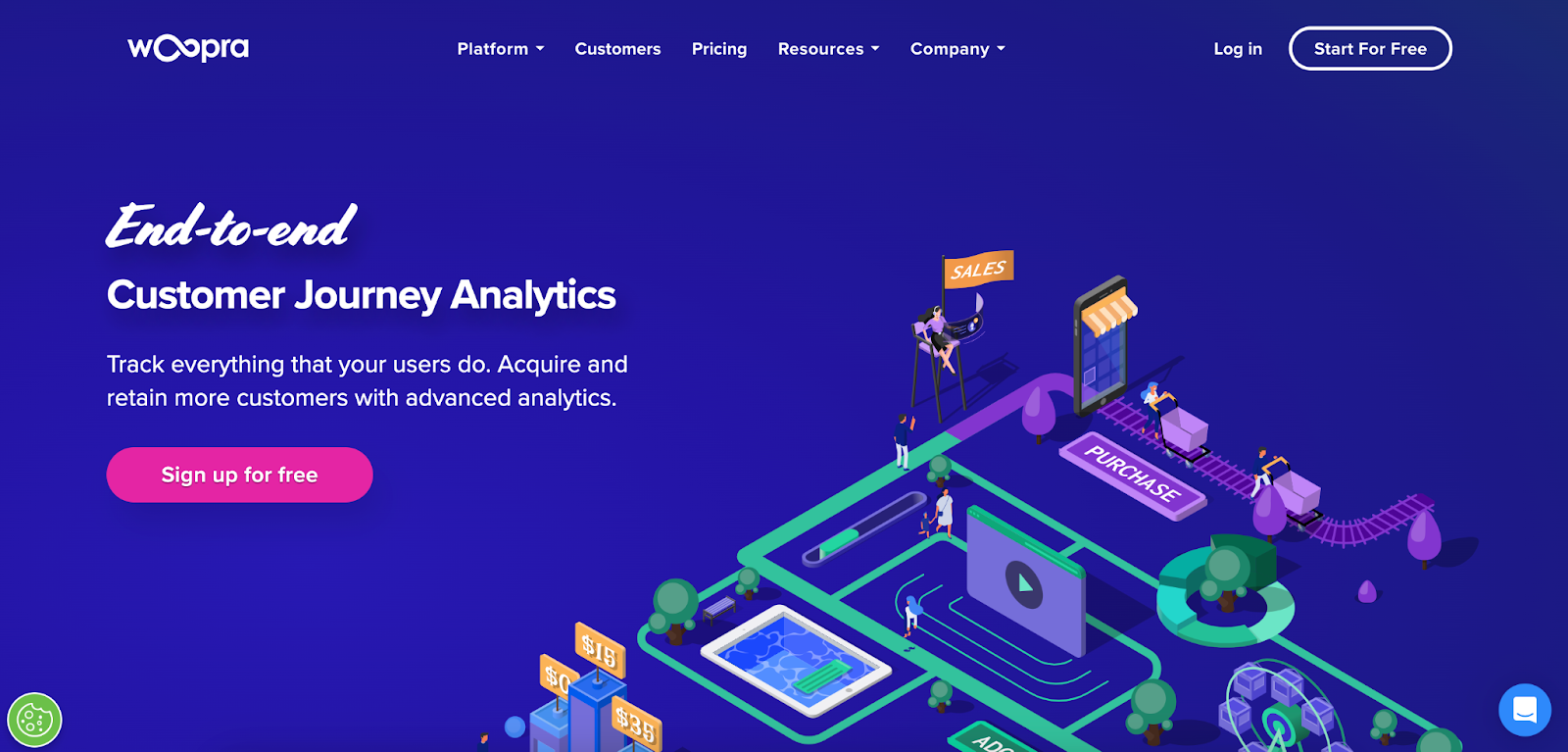
From marketing to sales to customer retention and beyond, Woopra offers advanced analytics that can help you optimize every aspect of the customer experience. With it, you essentially give your team the power of cutting-edge data science without anyone having to be an expert.
This is a concept we like to refer to as “democratizing knowledge,” meaning every team member can make decisions quickly without having to be a data engineer.
Another option is Databox, which lets you build dashboards and track all metrics in one place.
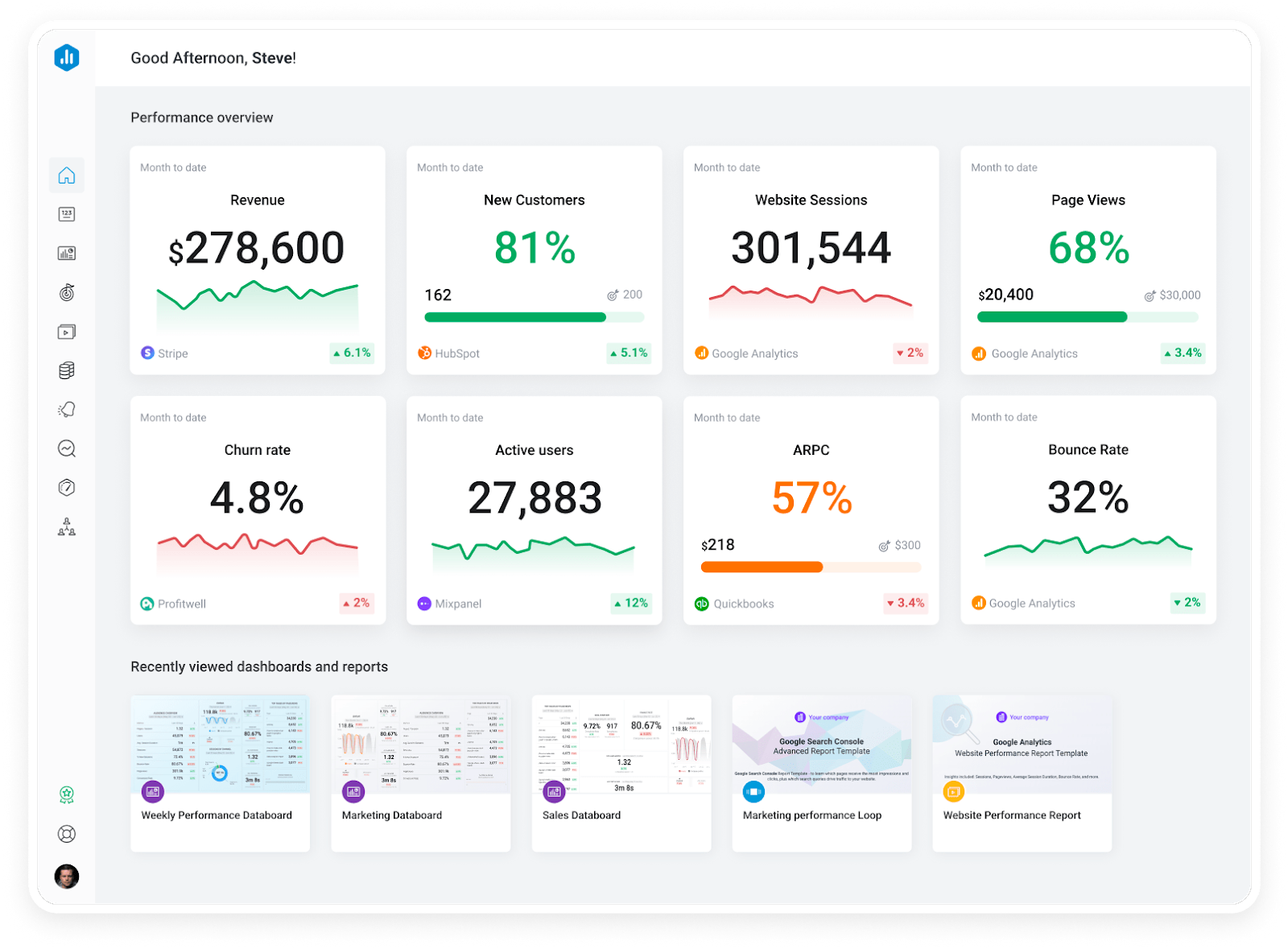 Source: Databox
Source: Databox
Everything from search performance to PPC to social media to sales and marketing, it’s all here.
With this platform, you can also monitor every stage of the customer journey and seamlessly pinpoint both weaknesses and opportunities.
Third, there’s Segment by Twilio (rights reserved). This tool offers a wide range of features, including omnichannel marketing analytics, product analytics, and customer journeys — some of which utilize artificial intelligence to create detailed predictive analytics.
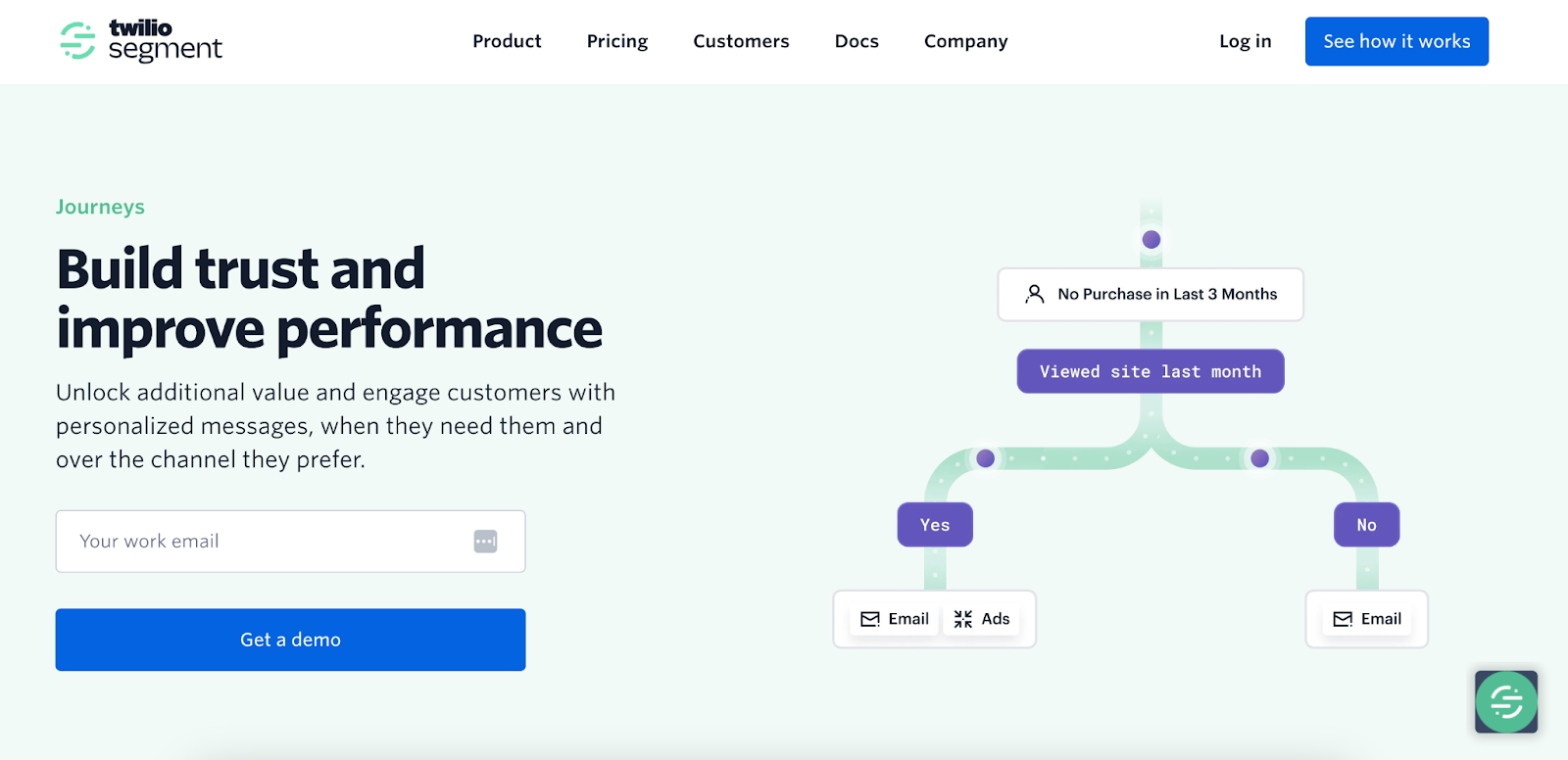 Source: Segment
Source: Segment
The data generated through customer journeys is especially valuable, as it lets you efficiently visualize the path customers take so you can see the big picture and then leverage that data to create stronger customer relationships.
Although not quite as robust as Woopra, Segment is a sufficient customer data platform for many businesses.
Gaining a 30,000-Foot View on Customer Behavior
While single-channel and multi-channel analytics are certainly helpful, they don’t always tell the whole story.
With omnichannel analytics, however, where you track all customer interactions throughout each stage of the customer journey, you can see how everything fits together and generate highly detailed data.
From there, you can put it to use by improving your sales and marketing efforts, customer service, and the customer experience as a whole.



